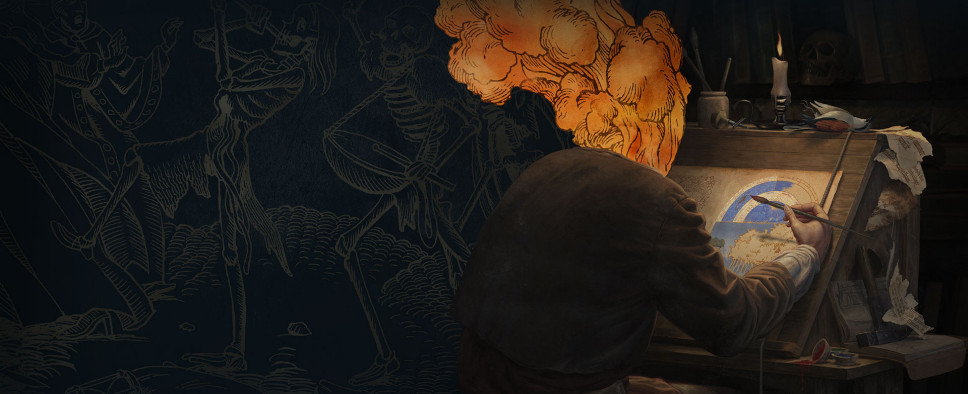Pentiment - Hannah Kennedy on Managing the Art Pipeline
-
Category: News ArchiveHits: 1345

One of the more notable things about Obsidian Entertainment's narrative adventure Pentiment is its striking art style clearly inspired by medieval manuscript illustrations. And if you wouldn't mind knowing a thing or two about how one goes about creating something like this, you should check out this Game Developer deep dive penned by Obsidian's art director Hannah Kennedy.
The article touches on Pentiment's inspirations, its interconnected art and story, the challenges of letting players locomote inside all that art, and the iterative nature of it all. We also get plenty of concept art and early sketches.
Here's a couple of paragraphs to get you started:
Our final (rigged) character count in-game is 157. We couldn’t afford to work every character up to the finish standards of the main cast until we knew how much they’d be featured… which we couldn’t know until the narrative had a complete pass. Until then, the concept team had to work from simple descriptions on a first pass with no emotions or specific person gestures and send them to animation for rigging. Since all our facial emotions are hand-drawn for each character and expression, we needed to budget that much later once we knew more specific info about story moments for each character.
This situation created a unique opportunity for the narrative team to use the in-progress art of characters to inform a character's tone and personality before all (or sometimes any) of their dialogue had been written. It was fun to see this circular relationship between the art and narrative teams. One of the risks of this is that we’d get the character’s vibe totally wrong for their final role in the game and need to revisit the design later. My first pass of Father Thomas’s design is a great example. I understood from his bio out of context that he needed to have a trustworthy look and feel more open and “for the people” than the abbot. I didn’t fully realize his significance to the overall story, and that he’d also need to be stubborn and intimidating in moments where he felt the church was being challenged. This is a great example of the story developing further and impacting the character designs.
Inversely, there were narrative moments that began as a small artistic detail included in a character design (e.g., Andreas and Bert’s hats moving between characters over time) which ended up evolving into their own little conversations and cutscenes.

